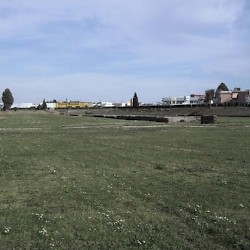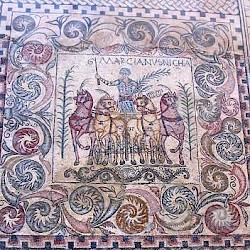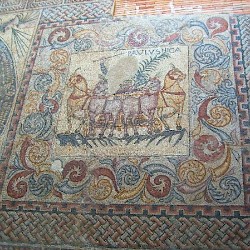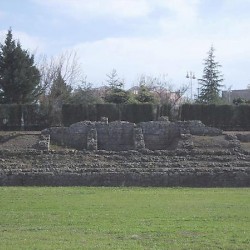Augusta Emerita, Circus
Augusta Emerita: Roman city in western Spain, modern Mérida, capital of the province of Lusitania.
The circus, or hippodrome, was used for chariot races. It was situated a bit outside Augusta Emerita, and was built in the first quarter of the first century, during the reigns of the emperors Augustus and Tiberius. Measuring 440 x 115 meter, it could accommodate about 30,000 people. Repairs were executed during the reign of the emperor Constantine II (337-340). It was probably still in use in the seventh century: one jockey, named Sabinianus, was buried in the Casa Herrera basilica in that age.
In Mérida's Museo Nacional de Arte Romano, two fourth-century mosaics can be seen that represent jockeys in chariots in the hippodrome. The palm branches show that they have been victorious. It is interesting to note that the inscriptions read Paulus nica and Marcianus nicha - which is Greek (Nika means "be victorious") written in Roman letters. One of the horses is called Inluminator.
 Augusta Emerita, Circus, track |
 Augusta Emerita, Mosaic of the races: Marcianus |
 Augusta Emerita, Mosaic of the races: Paulus |
 Augusta Emerita, Circus, seats |